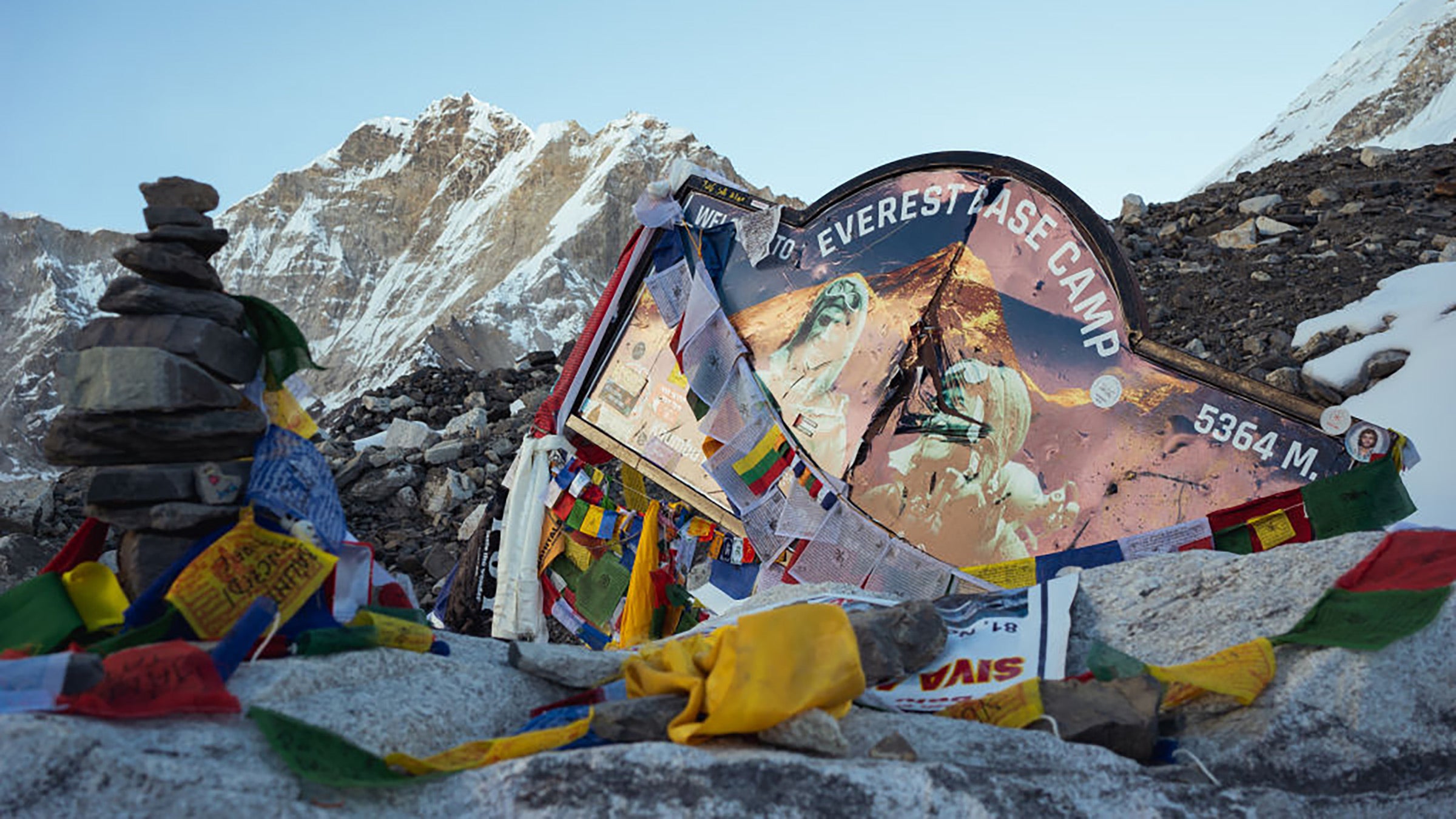The price to climb the world’s tallest peak is on the rise.
On January 21, the reported that the government of Nepal will raise the permitting fee for foreign climbers hoping to ascend Mount Everest during the busy spring season from $11,000 to $15,000. The announcement has yet to appear in the Nepal Gazette, the government publication in which official laws and regulations are published.
If the fee structure is made official, it will mark the first time that Nepal has raised the price to ascend Everest since 2015. According to the The Kathmandu Post, the new fee—which represents a 36-percent increase—will go into effect on September 1, meaning that climbers ascending Everest during the 2025 spring season will still pay the current price.
Foreign climbers ascending the peak in spring aren’t the only ones feeling the pinch: the permit fee for domestic Sherpa climbers will double, from $550 to $1,100. And permits for the less-popular fall and winter seasons will also go up by 36 percent, rising to $7,500 and $3,750, respectively, for foreign climbers.
Guides told ���ϳԹ��� that the fee increases are unlikely to dampen the demand to climb Everest.
“Permit price is not the issue,” said Argentine guide Willie Benegas, who has climbed Everest 13 times. “Maybe a price increase of $10,000 or $15,000 would have an impact on climbers coming from emerging markets, like India and China. But not $4,000.”
Climber Alan Arnette, who chronicles the history of Everest expeditions on his website, agreed. “Higher permit fees may impact price-sensitive climbers who choose low-cost guides,” Arnette said. “But likely won’t affect Western climbers who prefer guides costing $75,000 or more. Overall impact seems minimal.”
The rise in permitting fees comes as no surprise—in 2023 Nepal government officials announced their intentions of raising the price in 2025. When government officials first revealed the fee increase, they attributed it to the cost of removing dead bodies from the peak.
“We are discussing making insurance mandatory in search and rescue operations for all to support the retrieval of bodies from the mountain,” Nima Nuru Sherpa, president of the Nepal Mountaineering Association at the time, told in 2023. “If the dead bodies are not retrieved during that particular time or season, we have urged the government to issue a royalty-free permit to retrieve them at any time during the season or the next year.”
Everest climbers must cover the cost for guides, porters, cooks, gear, food, bottled oxygen, insurance, and transportation to and from Base Camp. Even the most frugal bootstrappers on lower-budget expeditions pay around $40,000 for their shot at Everest. Most climbers pay closer to $60,000. Some Everest expedition operators charge twice that for trips that include luxurious accommodations at Base Camp and multiple Sherpa guides to the summit.
Benegas, who advertises his own guided Everest climbs for $85,000, does not expect to see a downturn in congestion on the peak after the government imposes higher fees. “Climbers will come to Everest regardless,” he said. “The issue is the massive expedition companies bringing 60, 70, 80, sometimes even 100 clients. Regulations need to be on the size of the teams.”
The Kathmandu Post indicated that the new fee structure is just one of a slew of new rules on Mount Everest for 2025 and beyond. Some of the rules are ostensibly aimed at combating pollution, accidents, and crowding. These include a shorter valid permit period, a raise in insurance coverage for high-altitude guides and Base Camp workers, and��expansion of a rule introduced last year requiring climbers to collect and dispose of their own feces.
Perhaps the most impactful change is a rule that every two climbers on Everest and Nepal’s seven other peaks above 8,000-meters must pay for a guide or hire a licensed expedition operator. If the 2:1 climber rule is made official, it will mark the end of solo climbing on Everest.
Adrian Ballinger, whose Alpenglow Expeditions leads Everest expeditions from China, believes that this stipulation is beneficial during the spring season. All climbers on the peak during the preferred window—mid-May through early June—already rely on mountain workers to reach the top, even those ascending without a climbing Sherpa. “No one can truly say they soloed a normal route on Everest during the spring season,” Ballinger said. “Everyone benefits from the work—the fixed ropes, ladders, trailbreaking—being done on the mountain.” The stipulation could represent a financial boon for the local guides and porters who work on the peak.”
China has already adopted a stricter rule, requiring a 1:1 ratio of climbers to guides on its 8,000-meter peaks: Everest, Shishapangma, and Cho Oyu. The country also requires that all individuals use supplemental oxygen when climbing above 7,000 meters. Far fewer climbers ascend Everest from China compared to Nepal. Per The Himalayan Database, a website that charts ascents on Nepal’s 8,000-meter peaks, 91 percent of the 861 Everest summits in 2024 ascended the mountain from Nepal.
Ballinger, who stopped operating Everest trips from Nepal after 2014, said that other rules would better improve the standard of climbing Everest from Nepal. China, for example, also requires climbers to first ascend a 7,000-meter peak before applying for a permit for Everest. “Shit can still hit the fan on Everest,” Ballinger said. “Everyone needs to have experience up there.”
The announcement of new rules comes less than a year after Nepali officials enacted other regulations at Everest aimed at curbing pollution, overcrowding, and even opulence. On February 8, 2024, the Khumbu Pasang Lhamu Rural Municipality, the local governing body that oversees at Nepal’s Everest Base Camp, passed laws requiring climbers to from the peak in plastic WAG bags. Later in the month, the same officials banned large square and dome-shaped tents, prohibited helicopters from flying gear from Base Camp to higher camps on the peak, and required all campers at Base Camp to have a permit.
In May, 2024, Nepali officials on helicopter transport and tent size.


